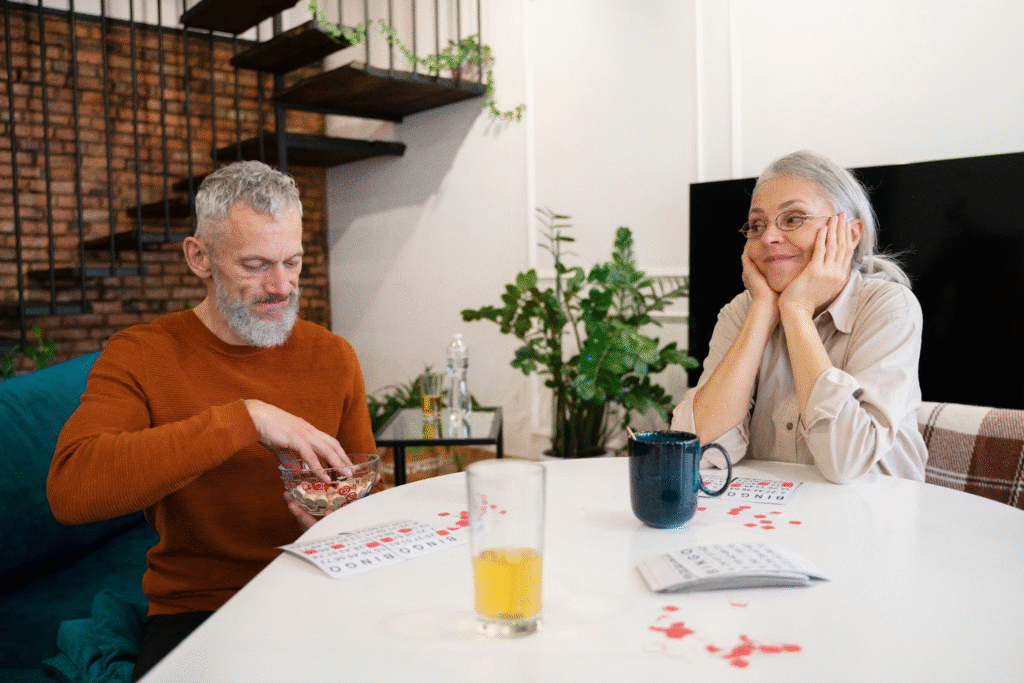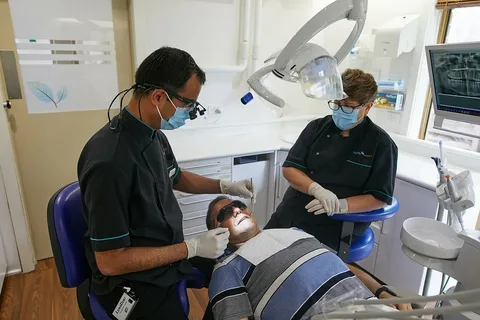Nobody wants to leave the comfort of their own home. And least of all the elderly, who have always lived in and known the comfort of their personal living space. With careful modifications to the house, we can delay the elderly’s move to places like an assisted living community and make their dream of living in their own home a reality.
Dementia patient refusing personal care often struggles, but creating a supportive home environment helps routines become more efficient and lowers stress. During these modifications, it is really important to be thoughtful in every change that we introduce, so that the routines and memories of the elderly are preserved unharmed. With such goodwill building, caring for them becomes much easier down the line.
Safety First: Essential Modifications for Peace of Mind
Making changes to the home becomes even more life-saving when dealing with dementia. For families handling challenges like a dementia patient refusing to go into care, adjusting the home can offer a caring and secure option that respects their wishes, while maintaining independence. These changes turn the home into a safe and supportive place where they can live among familiar surroundings and loved ones.
Improvements To Bathroom Safety
Bathrooms can be tricky spaces for safety, but can become safer through specific adjustments like these:
- Install grab bars and handrails close to toilets, showers, and bathtubs to add extra support
- Use non-slip floors or stick-on grips to help stop risky slips and falls
- Add walk-in showers or cut tubs for simpler entry
- Fit raised toilet seats with armrests for extra stability
- Upgrade lights, like adding motion-sensor night lighting
- Include shower chairs or benches so bathing feels more secure
Making the Kitchen Safer
Turn the kitchen into a practical and secure space:
- Use lever handles on faucets and cabinet doors.
- Install automatic shut-off mechanisms on stoves and appliances.
- Place bright task lighting beneath cabinets and over workspaces.
- Keep used items in convenient storage spots.
- Put non-slip mats near sinks and workstations.
- Add rounded edges to counters to help avoid injuries.
Making Pathways Easier to Move Through
These modifications ensure that the elderly are able to navigate around their home with ease and comfort.
Changing Stairways
To make stairs safer and easier to handle:
- Secure handrails on both sides of the stairs.
- Add better lighting for stairs with switches placed at the top and bottom.
- Use contrasting tape on stair edges so they are easier to see.
- Add stair lifts if mobility is a major issue.
- Place gates to ensure safety for those with dementia when it is needed.
Doorway and Hallway Updates
Make moving through the house seamless:
- Design doorways wide enough to fit mobility devices
- Use lever handles instead of round knobs
- Add small ramps to remove tripping risks at thresholds
- Install lights that turn on with motion for safer nighttime use
- Keep hallways and paths clear of any mess or obstructions
Improvements for Comfort and Ease of Use
Being comfortable in your home is essential to making the best of your living space. These modifications keep everything cozy and happy.
Bedroom Haven Changes
Turn the bedroom into a relaxing and self-sufficient space:
- Set bed heights to allow easier getting in and out
- Place switches for lights close to the bed
- Put a sturdy chair near the bed to assist with dressing
- Organize closets with shelves and rods at reachable levels
- Have emergency communication options within arm’s reach
Living Room Upgrades
Make shared spaces more helpful and accessible:
- Chairs or couches with good back and arm support.
- Bright lighting to help with reading or daily tasks.
- Easy-to-use entertainment controls with big buttons.
- Adjustable temperature settings to stay comfortable in any season.
- Open views across the area to keep an eye on things when needed.
Technology Ideas to Improve Safety
Technology has come a long way in our times, and we can surely use it to make things for the elderly a million times easier:
Smart Home Features
Today’s technology makes aging at home much easier:
- Smart thermostats to manage indoor temperature.
- Voice-controlled assistants help with talking and setting reminders.
- Home security systems that include medical alert options.
- Automatic pill dispensers provide correct doses at the right time.
- Devices that detect falls and offer quick help in emergencies.
Communication and Monitoring Tools
Stay connected without giving up independence:
- Medical systems offering round-the-clock emergency help
- Video devices designed to stay connected with loved ones
- GPS trackers to locate individuals who might get lost
- Video-equipped smart doorbells
- Home systems for quick emergency responses
Knowing When Extra Help Is Needed
There are times when changes or adjustments at home might not be enough. Families often reach a point where more care options need to be explored. This isn’t a failure. It’s a step forward in providing the right care. Memory care community can bring expert support while preserving the sense of safety and comfort that home modifications are aimed to create.
Advice and Resources From Professionals
Professionals have a deep knowledge of how to deal with dementia patients and the elderly in general. Their advice can be immensely helpful in such cases.
Partnering With Experts
Try reaching out to experts such as these:
- Occupational therapists give tailored advice to adjust spaces
- Certified aging-in-place specialists handle full home evaluations
- Contractors skilled in making homes more accessible
- Interior designers create spaces focused on senior ease and safety
Options to Find Funding and Support
Try looking into these possible solutions:
- Veterans benefits to support qualifying service members
- Insurance that might help with required medical upgrades
- State or local programs to provide needed assistance
- Non-profit groups that help with modification projects
Moving Ahead with Positivity and Belief
Making home changes to age in place is a way to invest in care, respect, and a better living experience. Each grab bar installed, each ramp added, and each light made brighter says something deeper: this space will always be ready to care for its cherished residents at any stage of their lives.
Dementia patient refusing personal care looks different for every family, but making changes with care and kindness can make dealing with it possible. These adjustments do more than improve safety. They turn homes into places where memories thrive, independence stays intact, and love deepens over time.
Keep in mind that staying at home as we age isn’t about making physical changes. It’s also about building a space full of hope, help, and countless chances to share meaningful times with the people we hold dear.
Read More Gorod








